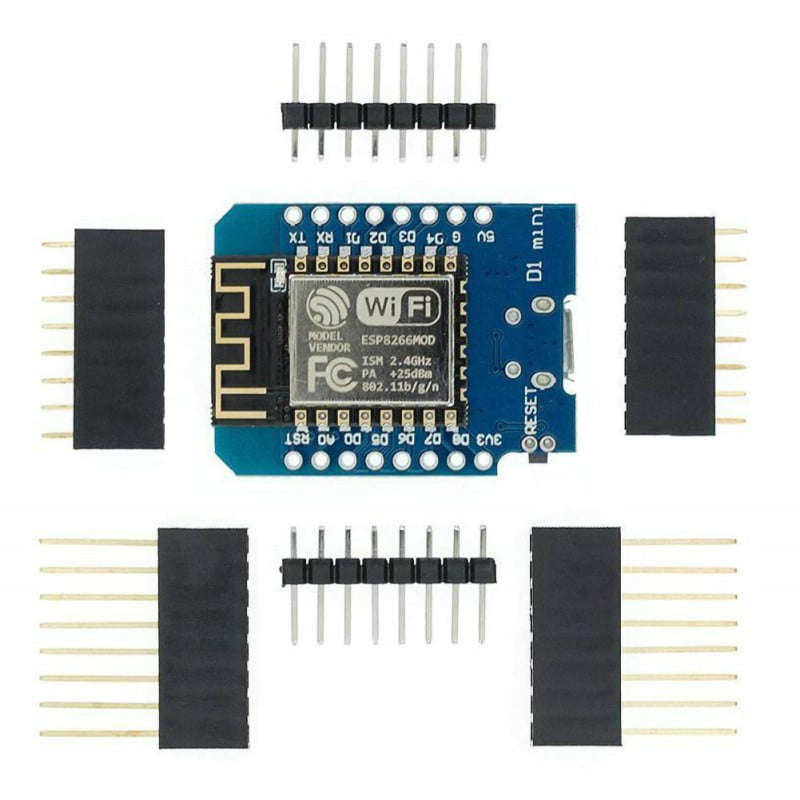
- #ESP8266 ARDUINO MINI HOW TO#
- #ESP8266 ARDUINO MINI SERIAL#
- #ESP8266 ARDUINO MINI FREE#
- #ESP8266 ARDUINO MINI MAC#
What I can recommend is the use of either the Chip CH340 or the Chip FT232RL - both worked very well for me. One way of powering the ESP for bootloading seems to be the use of the Arduino as described in some tutorials. You will need to connect your ESP to your commputer for bootloading the required firmware.
#ESP8266 ARDUINO MINI SERIAL#
Recommended: USB to ESP8266 Wifi Module Adapter / FTDI Serial TTL-232 USB I actually have not been able to make the Uno work and had no problems with the Mega.ġ.3.
#ESP8266 ARDUINO MINI FREE#
It has more flash memory and most importantly it seems to be resilient to 5V on the input pins! I have not had any problems feeding 5V inputs from the Arduino to it.Īrduino Mega seems to be the most trouble free option given the the 3,3V pins of the Mega will supply sufficient current to the ESP.īeware: Arduino Nano and Uno 3,3V pins do not seem to provide sufficient current for the ESP2866 to work.

Recommendation: Try to find a newer version, which is the version with only one LED - not the older two LED version. Older versions died on me instantly and require a voltage splitter that brings down input signals to 3,3V. On the left the 'old' ESP8266 with two LEDs - on the left the new ESP8266 with one LEDīeware: The older versions do not tolerate 5V on the input pins - however 5V is the IO output voltage of Arduino boards. It also can be recognized by having two LEDs on the board (one for power one for data), the new version only has one (larger) LED (the LEDs are visible in the pictures below to the right of the long horizontal antenna-bar. I have seen it usually with the "AI-Cloud inside" print. The older version is harder to work with, has less memory and is therefore less recommendable. However, beware that even within the ESP8266-01s there are different versions as explained in this very recommendable tutorial. I used an ESP8266-01 (which seem to be the 'essential' ESP board). While more sophisticated boards will provide you for a few euro more with more (up to 16) IO pins, USB ports, buttons that allow for easier flashing etc., the process for setting them up as a wifi shield remains essentially the same. There are a large number of ESP development boards out there. However this tutorial is aimed at stripping it down to the essential and giving you one working way to making it work. These three steps above is all you need - to each of these steps there are numerous ways to get it done and googling will open up more routes than the ones described in this tutorial for you and I encourage you to read around and tinker with different setups. as used by many tutorials out there are not necessary. Please note we will NOT be using the ESPtool and therefore also not require Python, pySerial etc.

I assume you have the Arduino IDE installed - plenty of tutorials around.
#ESP8266 ARDUINO MINI MAC#
This tutorial works with Mac as well as with Windows!


Please note: The choice of Arduino Mega is deliberate since it is much easier to use it in combination with an ESP8266 compared to using an Arduino UNO! Using and UNO poses additional challenges that are not covered sufficiently in this tutorial!
#ESP8266 ARDUINO MINI HOW TO#
We will therefore discuss in detail which hardware to use and how to use it correctly to get online as fast as possible. Using an ESP8266 as a wifi shield (instead of as a stand alone board) is considered 'tricky', most likely because of issues that arise from the hardware setup given the many different versions of seemingly similar hardwares and the interaction between these diverse parts. We start with an intro to the required hard- and software.


 0 kommentar(er)
0 kommentar(er)
